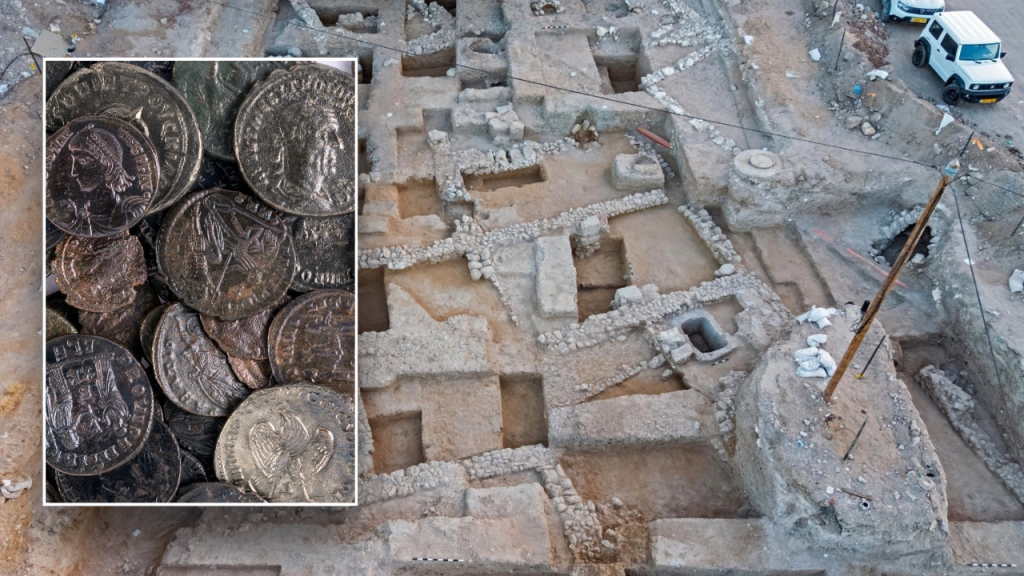Archaeologists in Israel recently uncovered the remains of a destroyed Jewish public building in Lod, central Israel, shedding light on Jewish life in ancient Roman-era Israel. The building was filled with impressive stone and marble artifacts, as well as Greek, Hebrew, and Latin inscriptions. The presence of an inscription with the name of a Jewish man from a priestly family, along with the absence of pig bones, indicates the building’s association with the Jewish community. Additionally, a hoard of 94 coins dating back approximately 1,650 years was found, with the oldest coins potentially originating from 221 AD. The treasure was likely hidden during the Jewish revolt against Constantius Gallus in 351 AD, with the intention of being recovered when the situation calmed down.
Excavators Shahar Krispin and Mor Viezel believe the building may have served as living quarters for the city’s Jewish elders. The destruction of the building down to its foundation indicates that the revolt was forcefully suppressed with violence. Lod was a significant Jewish center after the destruction of the Second Temple in Jerusalem, according to Talmudic writings. The discovery provides evidence of the extent and power of the revolt in Lod, suggesting it was more than just a local uprising. Mayor Yair Revivo described the find as emotionally moving and another link in Lod’s Tannaitic period heritage.
The discovery raises questions about the building’s specific function, with Professor Joshua Schwartz suggesting it may have served as a synagogue, study hall, meeting hall for elders, or a combination of these functions. The size of the building, the coin hoard, and other archaeological finds align with descriptions of Lod/Diospolis as a center of Torah-true Jewish life in the Mishna and Talmud periods. The role of Lod as a leading community with elders continued even after its destruction during the Gallus Revolt, highlighting its importance in Jewish history. The find provides valuable insights into the Jewish community’s survival and resilience during this tumultuous period in history.
The discovery in Lod adds to the growing body of archaeological evidence supporting the rich Jewish history in the area. With the presence of Greek, Hebrew, and Latin inscriptions, as well as the absence of pig bones, the building clearly belonged to the Jewish community of the time. The hoard of coins hidden during the Jewish revolt further illustrates the challenges faced by the community and their efforts to protect their possessions. The find also underscores Lod’s status as one of the oldest cities in the world, highlighting its enduring significance in the region’s history. The excavation provides a tangible link to the past, offering a glimpse into the lives of Jewish residents during a turbulent period of Roman rule.
Overall, the discovery of the destroyed Jewish public building and the hoard of coins in Lod represents a significant contribution to our understanding of Jewish life in ancient Roman-era Israel. The findings provide valuable insights into the community’s resilience in the face of adversity and shed light on the extent of the Jewish revolt against Constantius Gallus. The building’s destruction and the deliberate hiding of the coin hoard highlight the violent suppression of the revolt and the challenges faced by the Jewish community during this period. The site’s significance as a center of Torah-true Jewish life is underscored by the archaeological evidence, offering a unique window into the past and reinforcing Lod’s importance in Jewish history. The discovery serves as a testament to the enduring cultural heritage of the region and the resilience of the Jewish community in the face of historical challenges.













